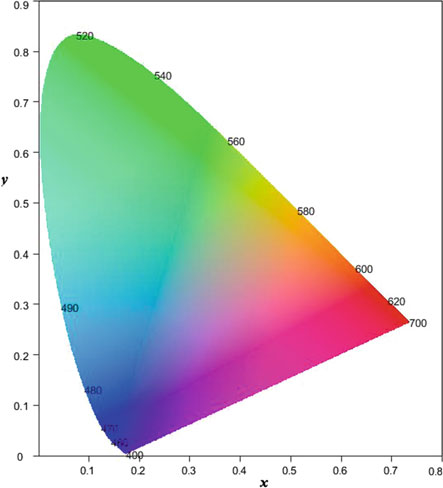4.2.1 CIE XYZ, xyY Color Spaces
Need for Standard Color Models
- Color is complex, with an infinite number of colors possible.
- Different devices and applications produce colors in different ways.
- A standard color model is necessary to:
- Reproduce colors accurately.
- Translate colors interchangeably between different devices and applications.
- Represent each color numerically.
- Identify the gamut (range) of all visible colors.
Contributions of Newton, Maxwell, and Grassmann
- Isaac Newton: Laid the foundation for understanding colors by splitting light into spectral colors (rainbow colors, Fig. 4.1). Showed that light is a mixture of pure colors, and object colors are due to reflectance of different wavelengths.
- James Clerk Maxwell: Discovered that mixing red, green, and blue monochromatic light could create other colors. Showed color mixing by projecting and superimposing three monochromatic pictures.
- Hermann Grassmann: Established that colors are additive. Formulated Grassmann’s Laws:
- Any color can be matched by a linear combination of three primary colors (provided no primary can be matched by the other two).
- A mixture of two colors can be matched by linearly adding their primary components.
CIE XYZ Color Space Based on Maxwell’s Tristimulus Theory and Trichromatic Vision
- Tristimulus Theory (Maxwell): Based on the trichromatic color vision theory of Young and Helmholtz.
- Trichromatic Color Vision (Young and Helmholtz): Human vision has three types of cones sensitive to three narrow bands of light (red, green, and blue).
- CIE (International Commission on Illumination): Developed the XYZ color space in 1931.
- Color Matching Functions:
- Figure 4.2 shows the three color matching functions, indicating human eye response to visible colors.
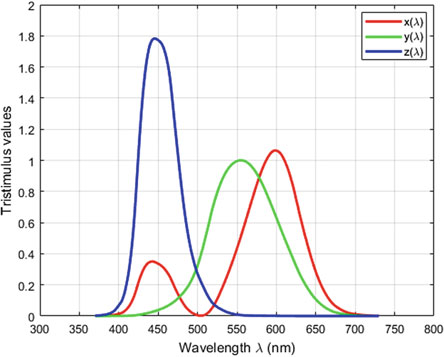
- Peaks at approximately 600 nm (red), 550 nm (green), and 450 nm (blue).
- Primary Colors: CIE used three primary colors to match all spectral colors:
- : 700 nm (red)
- : 546.1 nm (green)
- : 435.8 nm (blue)
- Chosen for practical reasons:
- and were easily reproducible using mercury excitation lines.
- 700 nm (R) has homogenous and nearly constant hue.
-
Visible Light Spectrum and Tristimulus
- Figure 4.1 represents visible light spectrum and the tristimulus.

-
Color Matching and Representation:
-
Three primary stimuli are projected and mixed in various proportions to match spectral colors.
-
Each color represented as a three-value tuple: .
-
Normalization to remove intensity:
(4.1)
- , , are purely chromatic values.
- Create three Color Matching Functions (CMF): , , , where is the wavelength.
- CIE RGB color space is based on these three CMFs.
-
-
CIE xy Chromaticity Diagram:
- , so is a dependent function ().
- Projecting the 3D curve onto the 2D plane creates the horseshoe-shaped 2D curve (cyan color in Fig. 4.3).
- Transformation to CIE xy curve:
- Align with the CIE luminosity function .
- Remove negative values in .
- CIE XYZ color space is based on the curve.
-
CIE xyY Color Space:
- CIE gamut only represents chromaticity (hue and saturation), not luminance (brightness).
- Add luminance/brightness as the third dimension, .
- CIE color space is the object color space:
- and are chromaticity values.
- is the luminance value.
- Significance of CIE XYZ Color Space:
- Provides a color gamut with all possible colors.
- Specifies each color with a three-value tuple .
- Provides a reference for all other color models.
- It is a device-independent color space.
4.2.2 RGB Color Space
-
Device Dependence: RGB colors are device-dependent; different devices use different RGB primaries.
-
sRGB: Computers use a standard RGB color model (sRGB).
- sRGB primaries are chosen from the CIE XYZ color gamut.
- sRGB gamut is a triangle inside the CIE XYZ gamut (Fig. 4.5).
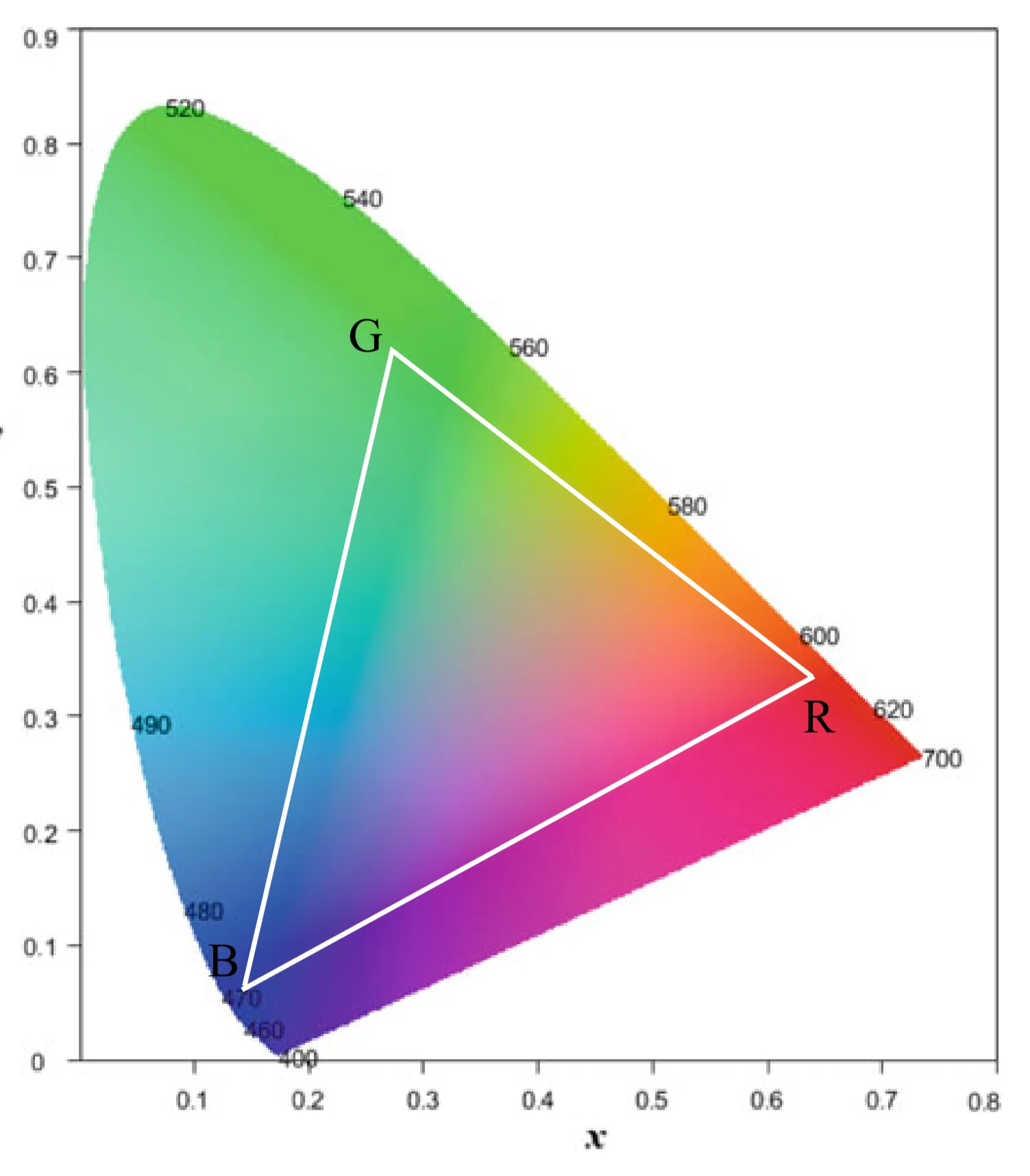
-
RGB Color Cube:
-
All possible colors created by the RGB palette can be visualized in a 3D cube (Fig. 4.6).
-
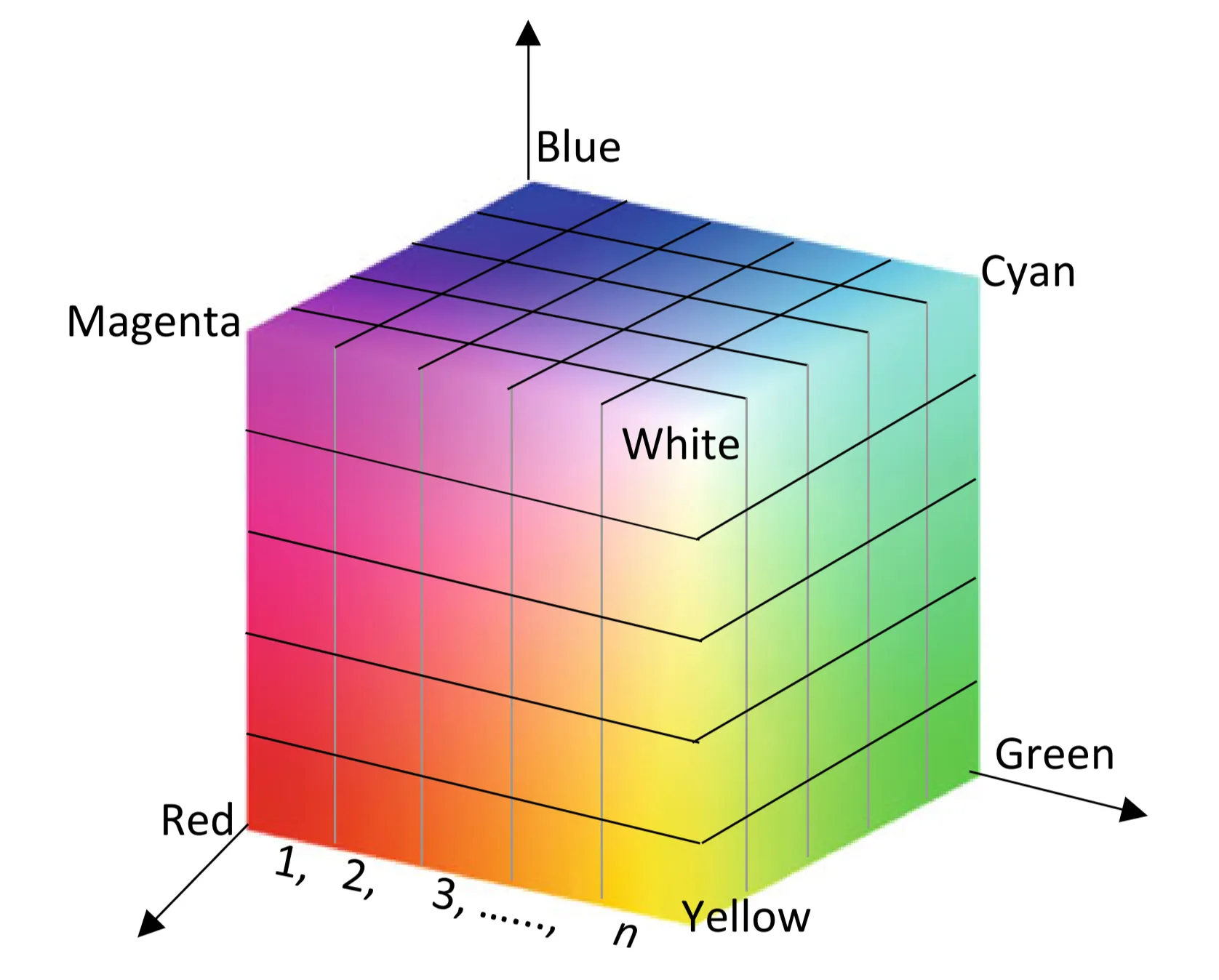
-
Colors are usually quantized.
-
Given pixel values , a color is defined and reproduced as:
-
-
Out-of-Gamut Colors:
- RGB color spaces cannot represent all visible colors.
- Approximation is needed for out-of-gamut colors.
- For a color out of the RGB gamut, the approximation is the intersection of the RGB triangle and the line (connecting and the white point ).
- is a desaturated color of .
4.2.3 HSV, HSL and HSI Color Spaces
- Deficiency of the RGB space:
- RGB is not intuitive.
- It does not conform to how humans perceive and make colors.
- High correlation between three channels
- HSV and HSL definition
- Intuitive because these are based on how artist make colors
- H: Hue, S: Saturation, V: Value or B:Brightness, or L: Lightness
-
Intuitive Color Mixing:
- Artists use pigments (pure colors) and mix them with white, black, or gray.
- Tints: Pure color + white (lighter colors).
- Shades: Pure color + black (darker colors).
- Tones: Pure color + gray (different purity/saturation).
- Figure 4.7a illustrates tint, shades and tones using reddish colors.
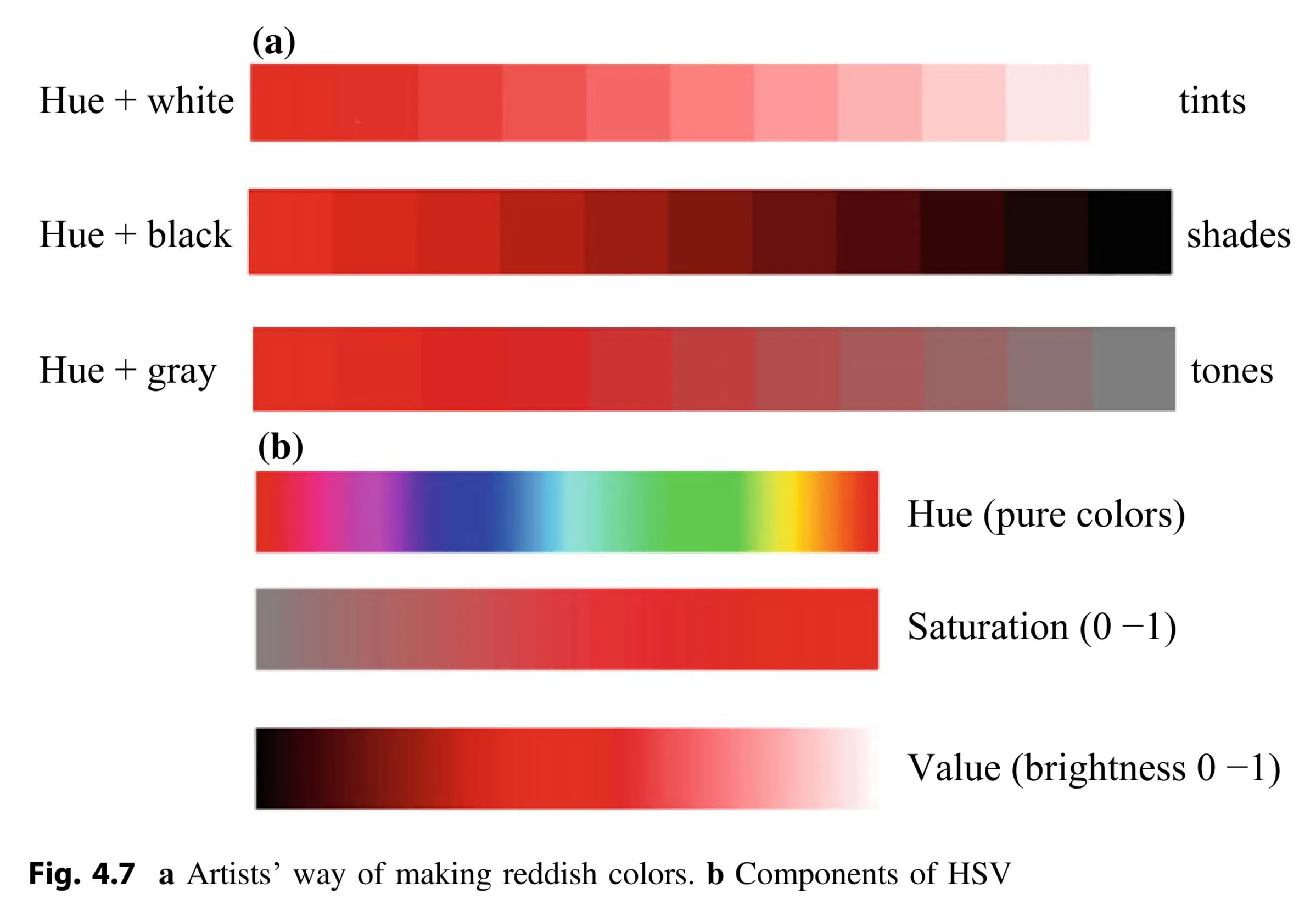
-
HSV Color Model:
- Based on how artists make colors.
- Three components:
- Hue (H): The pure color, determined by the dominant wavelength on the visible spectrum (Fig. 4.1).
- Saturation (S): The colorfulness or vibrancy of the color. More saturated = more vivid.
- Value (V) / Brightness: How bright or dark the color is.
- Figure 4.7b illustrates the HSV color model with red.
- Figure 4.8 Left: pure color on a ring, Right: hue-saturation wheel.
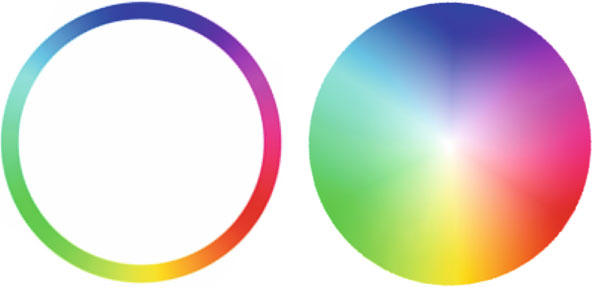
-
HSV/HSL Cylinder, Cone, and Double Cone Representations:
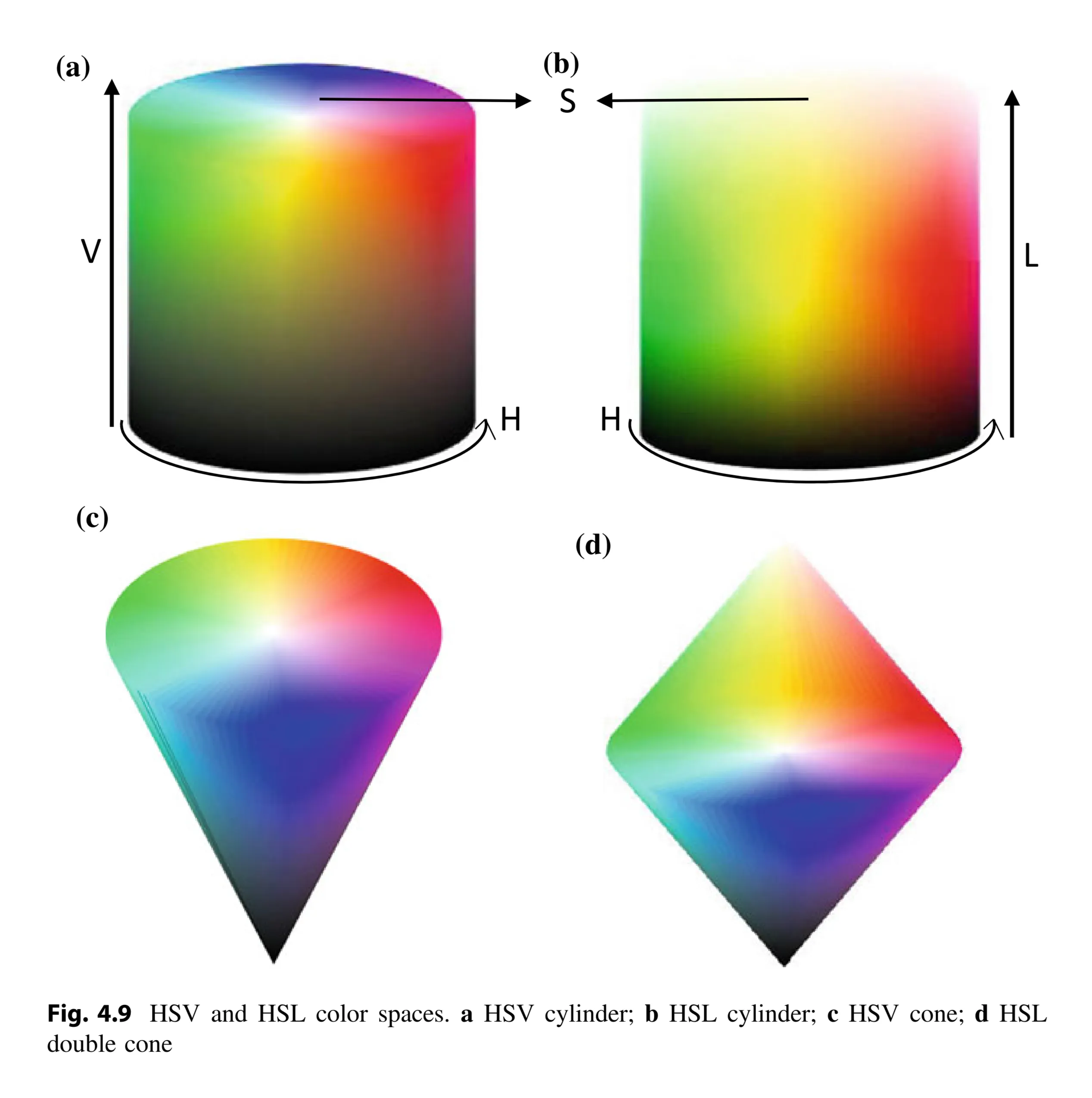
- HSV Cylinder (Fig. 4.9a):
- Pure colors (hues) are arranged in a circle.
- Saturation varies along the radii of the circle, creating a hue-saturation disk.
- Hue-saturation disks with different brightness are stacked to form a cylinder.
- Most saturated colors are on the top (V = 1).
- HSL Cylinder (Fig. 4.9b):
- Similar to HSV, but the most saturated colors are in the middle.
- The top of the cylinder is white (L = 1).
- HSV Cone (Fig. 4.9c):
- Colors become less colored (more redundant) as they go down the cylinder.
- HSV is often represented as a single cone.
- HSL Double Cone (Fig. 4.9d):
- Colors become less colored as they go up or down the cylinder.
- HSL is often represented as a double cone.
- Radii of the cones are called “chroma” instead of “saturation.”
- HSV Cylinder (Fig. 4.9a):
- Invariance to lighting variations.
- The H and S are invariant to lighting variation or intensity changes.
- It can be corrected by linear scaling
4.2.4 CIE LUV Color Space
-
Non-Uniformity of CIE XYZ and RGB Spaces (MacAdam Ellipses):
- CIE XYZ and RGB spaces are non-uniform in terms of color differences.
- Calculated differences between colors are not proportional to perceived differences.
- MacAdam ellipses (Fig. 4.11) illustrate this non-uniformity:
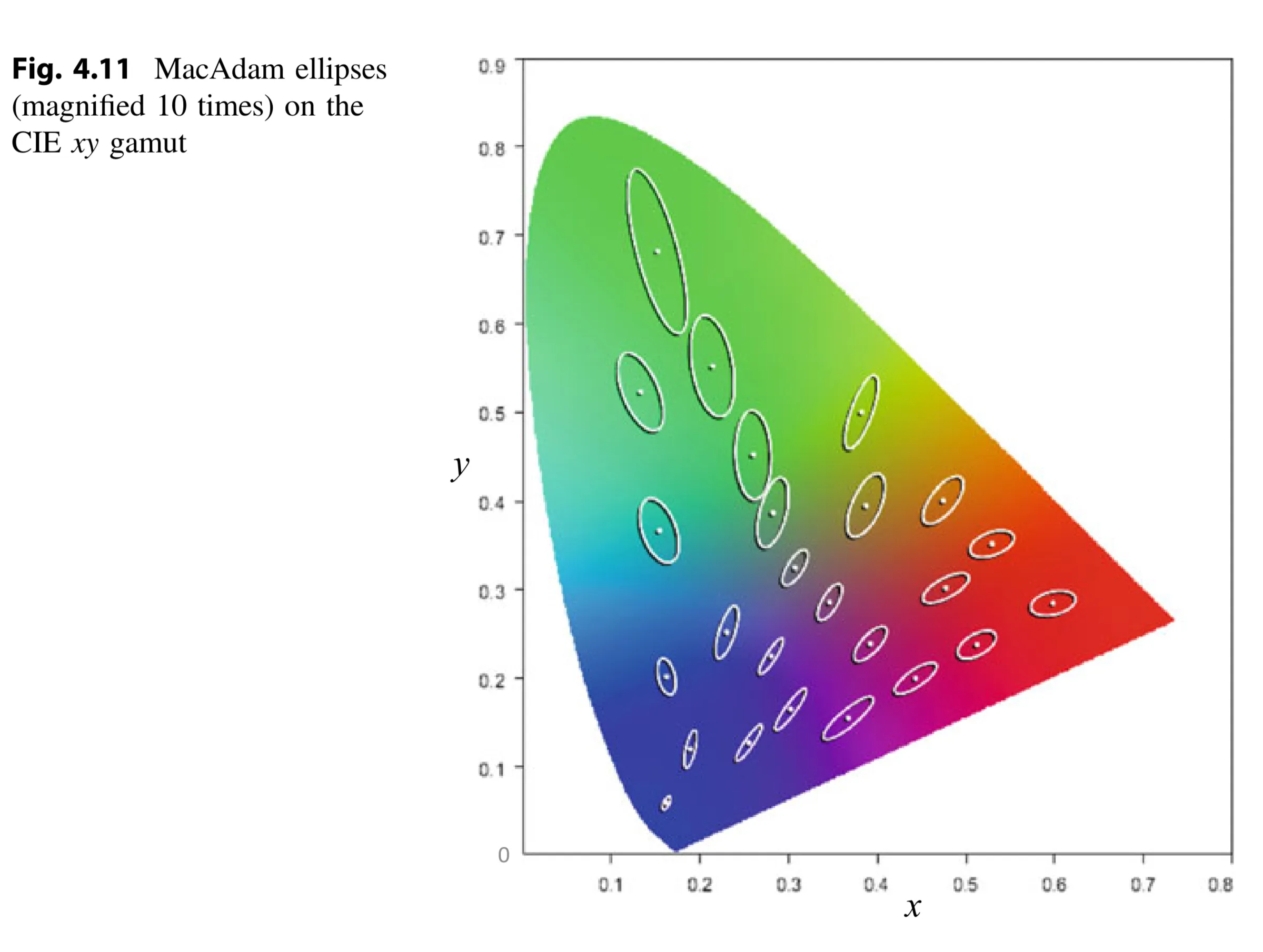
- Each ellipse represents colors within the Just-Noticeable-Difference (JND) threshold.
- Colors within an ellipse are perceivably the same.
- Sizes of ellipses vary significantly across the gamut.
-
CIE Luv and Lu’v’ Spaces to Address Non-Uniformity:
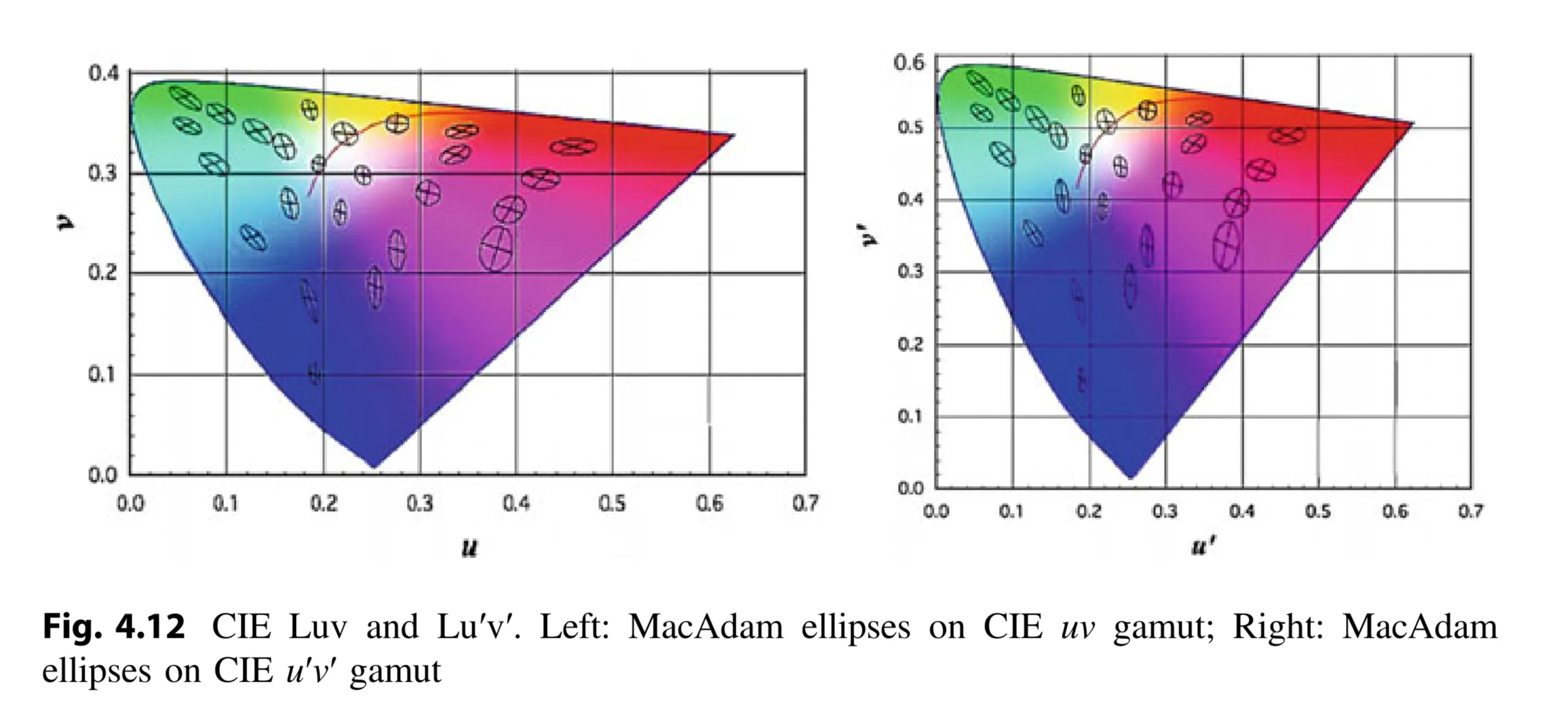
- Created to overcome the non-uniform color spread problem.
- Transformed from CIE XYZ space.
- Idea: Stretch or squeeze the CIE gamut to make MacAdam ellipses more uniform in size.
4.2.5 Y’CbCr Color Space
-
Separation of Luminance and Chrominance:
- Based on separating luminance from chromaticity (like HSV and LUV).
- Ideal for many color applications, including image processing and feature extraction.
-
Y’CbCr Transformation from RGB:
(4.21)
- : Luminance.
- : Blue component.
- : Red component.
- RGB and Y’CbCr values are in the range [0, 255].
-
Advantages for Image Compression and Representation:
- Most image information is concentrated in .
- Channels can be treated independently (unlike RGB).
- More importance can be given to .
- More efficient communication (e.g., fewer bits for color channels) and more compact representation.
- Example: Fig 4.13 shows an example of Y’CbCr channels
- Y’ channel can be sent out independently
